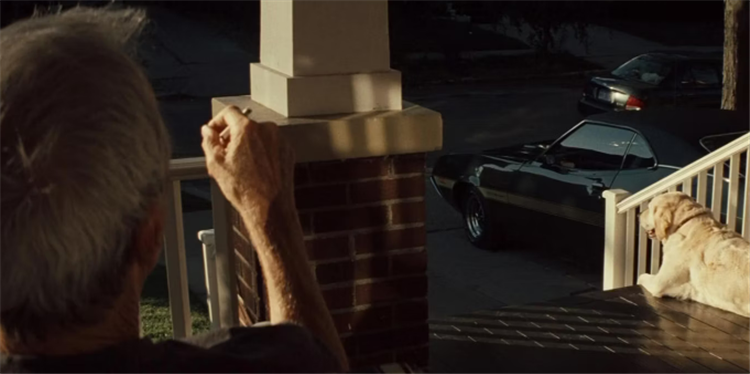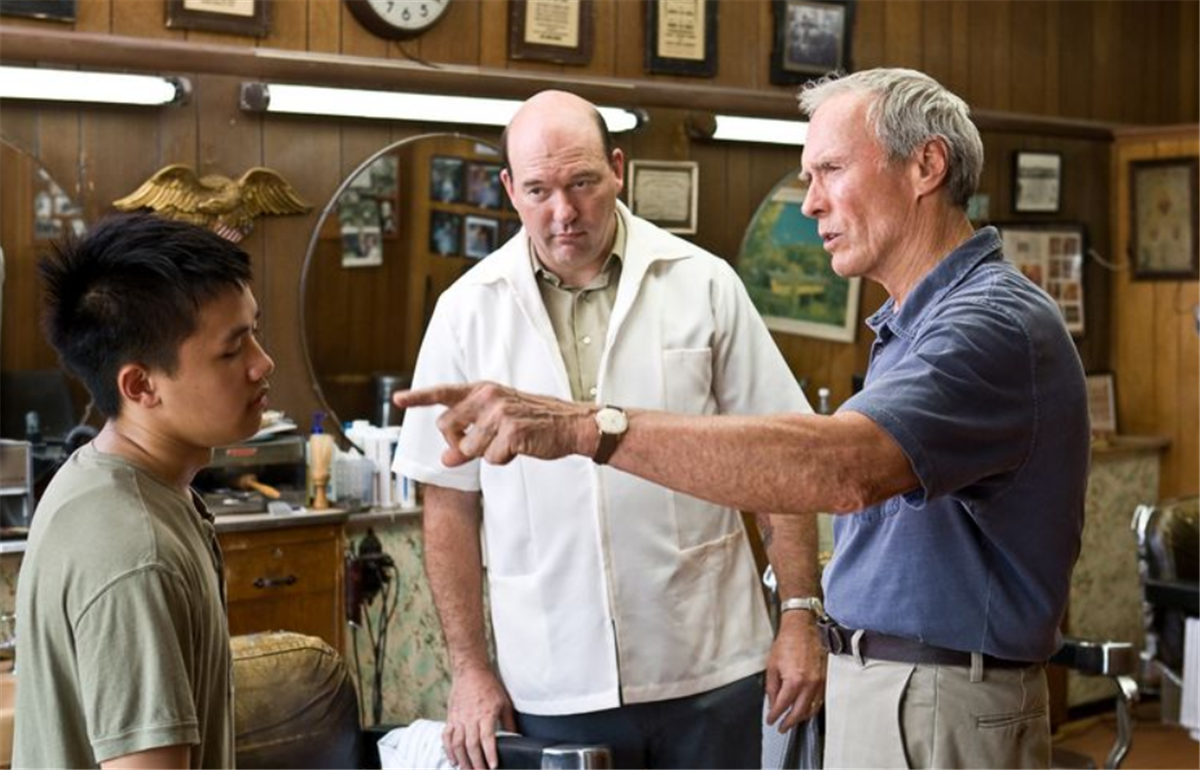Gran Torino was released in 2008, and decades later, it remains Clint Eastwood’s most powerful film, with strong messages about redemption.
Released in 2008, Clint Eastwood’s Gran Torino remains a compelling cinematic tapestry, with a poignant narrative rich in character development and themes of redemption and personal transformation. Eastwood, returning to a starring role after a four-year hiatus, showcases not only the acting prowess with which he’s chiseled his profile into Hollywood’s Mount Rushmore but also his razor-sharp directorial, writing (alongside Nick Schenk), and producing (alongside Bill Gerber and Robert Lorenz) chops.
Gran Torino is set in a derelict Detroit, MI neighborhood and follows Eastwood’s Walt Kowalski, a Korean War veteran who not only wears his faults on his sleeve but waves them as freely as the American flag mounted to his front porch. Having recently lost his wife, Walt’s bitterness and isolation are personified by his prized 1972 Ford Gran Torino, a vehicle that — much like himself — was a powerful product of its time but is succumbing to a world that’s changing faster than its 140-horsepower 302 V-8 engine can keep up with. With his wife gone and his sons and their families the embodiment of superiority and superficiality, Walt’s inner circle consists of himself, his adorable yellow labrador retriever Daisy, and a cooler of Pabst Blue Ribbon.
Clint Eastwood’s Walt Kowalski Is Vile, But Also Vulnerable

This is a delicate needle to thread, but Gran Torino does an impressive job balancing these nuances and complexities without diluting the message with a reductive and overly simplistic resolution.
As Walt, Eastwood masterfully envelops the palpable anger and frustration of an aging man desperately trying to mask his scars — both emotional and physical — the latter of which is evidenced by his attempts to brush off his rapidly declining health. The former, meanwhile, is depicted not only through a gruff scowl one would expect to encounter if the phrase “get off my lawn” sprouted limbs but also through cruel racial slurs and prejudices levied against anyone different than himself. This is most prevalent in Walt’s initial attitude toward his Hmong American neighbors.
The narrative accelerates when one of those neighbors — a shy boy named Thao (Bee Vang) — fumbles an attempt to steal Walt’s Gran Torino at the behest of a local gang led by Thao’s cousin. Unbeknownst to Walt, this event is the catalyst for his transformation from a bitter, racist old man into — well… let’s call a spade a spade — a slightly less bitter, slightly less racist old man who becomes an unlikely mentor and friend to Thao and his family.
At no point does Gran Torino attempt to paint Walt as an altruistic protagonist. His core values never change throughout the film, nor do his off-color remarks rooted in stereotypes and his overt use of racial slurs ever so much as tap on the breaks. This is perhaps best depicted through Walt’s interactions with Thao’s sister Sue (Ahney Her), who sees Walt for exactly who he is and uses her humor and intellect to chip away at an exterior hardened several times over. This is a delicate needle to thread, but Gran Torino does an impressive job balancing these nuances and complexities without diluting the message with a reductive and overly simplistic resolution.
Gran Torino Isn’t Without Its Faults
Notably, Gran Torino is the first American film to feature a large Hmong American cast. While the Hmong families’ communal bonds are meant to serve as a dichotomy of Walt’s solitude, it’s important to acknowledge the criticism the film has received for cultural inaccuracies. Among those critics is Vang, who said in 2011:
In a similar way, after Gran Torino’s release, Hmong around the country were furious about its negative stereotypes and cultural distortions. I know this acutely because when I spoke at public events, they came out to confront me. I found myself in the awkward position of explaining my obligation as an actor while also recognizing that, as a Hmong American, I didn’t feel I could own the lines I was uttering. I also told them that although many of us on the set had objected to aspects of the script, the producers preferred whichever Hmong “cultural consultant” had the most amenable take on the matter and would lend credence to whatever Hollywood stereotypes the film wanted to convey. I reminded my critics that this was a white production, that our presence as actors did not amount to control of our images.
Walt’s vulgar language and use of ethnic slurs are meant to put an uncomfortable but necessary spotlight on the character’s flaws, but the dramatization and manipulation of other cultural elements do little more than serve the story Eastwood and company already decided they wanted to tell.
Gran Torino’s Ending, Explained

Most importantly, Gran Torino is a harrowing glimpse into how, depending on the nature of one’s past sins, true redemption can sometimes be fait accompli.
Walt’s tumultuous character arc goes out with a bang, to say the least. The film builds tension as a climactic showdown with Thao’s cousin’s gang seems to be the foregone conclusion, but it’s merely misdirection. Instead, Walt chooses to sacrifice himself, using non-violence to implicate the gang in front of a large audience of witnesses. The scene is devoid of needless melodrama, with somberness and simplicity enhancing its emotional impact.
Gran Torino succeeds on many levels. It’s a profound character study, a message of personal growth, and a strong reminder of the importance of human connection. It also serves as a testament to Eastwood’s immense talent as a multihyphenate, as he excels beneath the many hats he wears in the overall production. Most importantly, Gran Torino is a harrowing glimpse into how, depending on the nature of one’s past sins, true redemption can sometimes be fait accompli.
